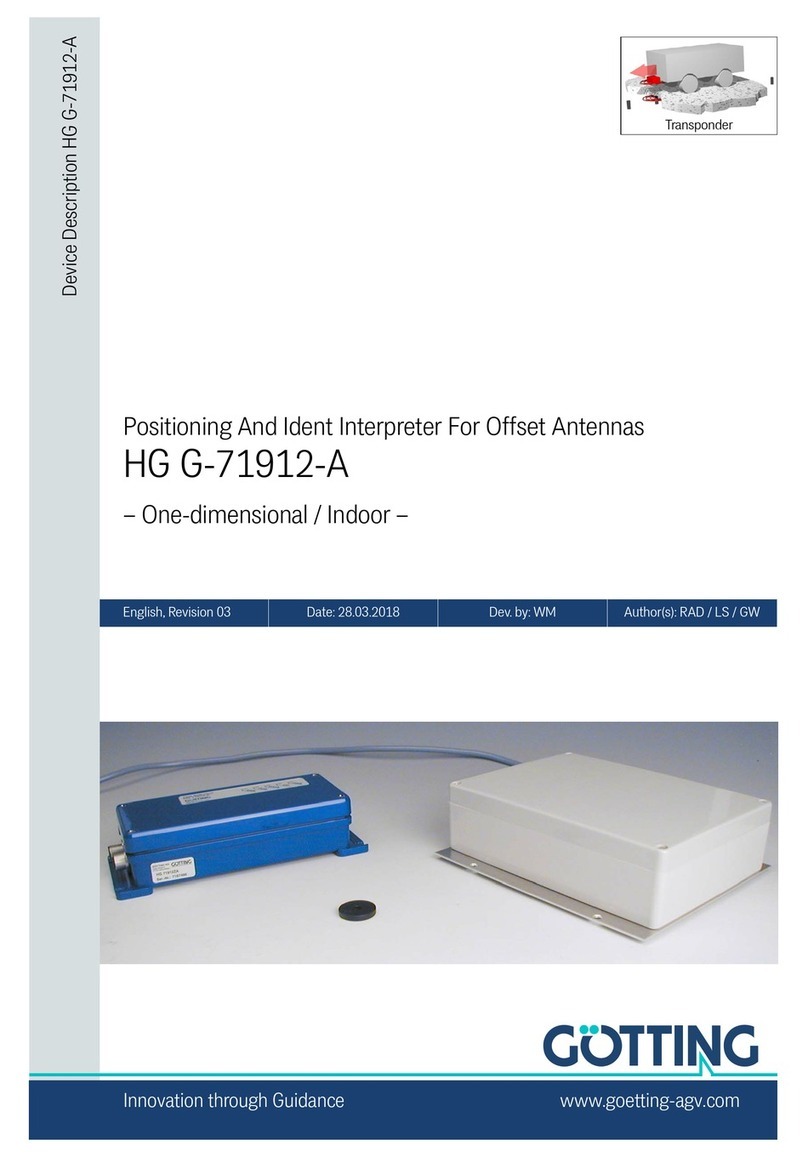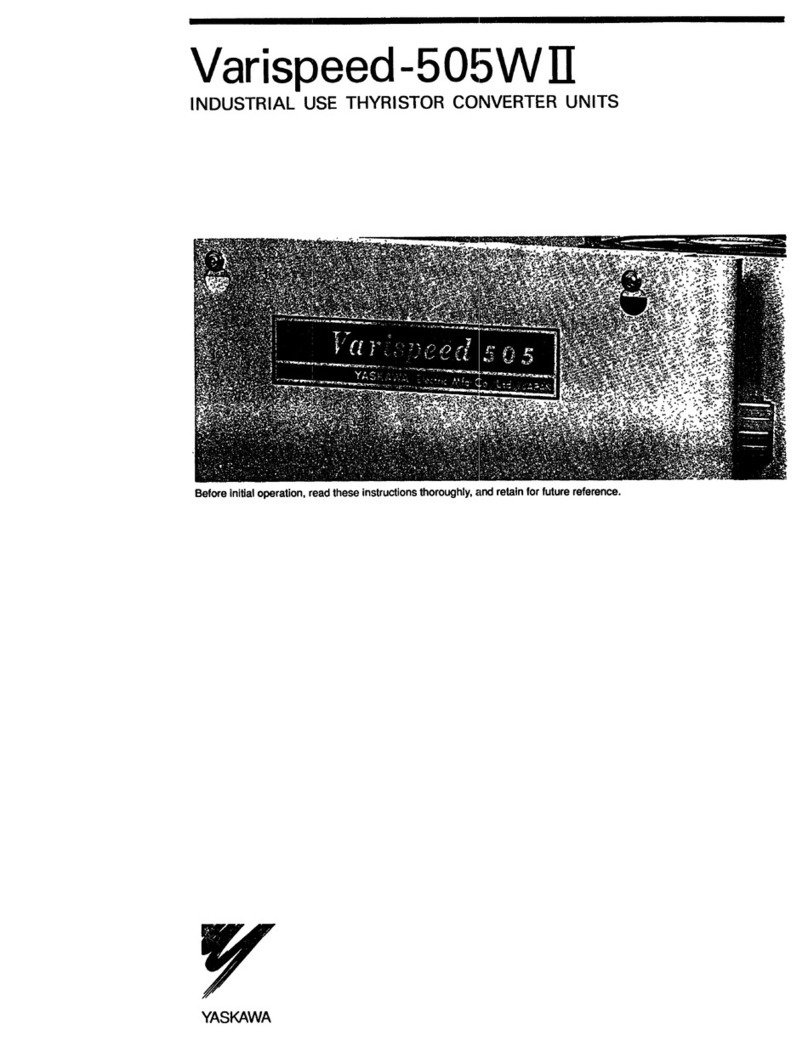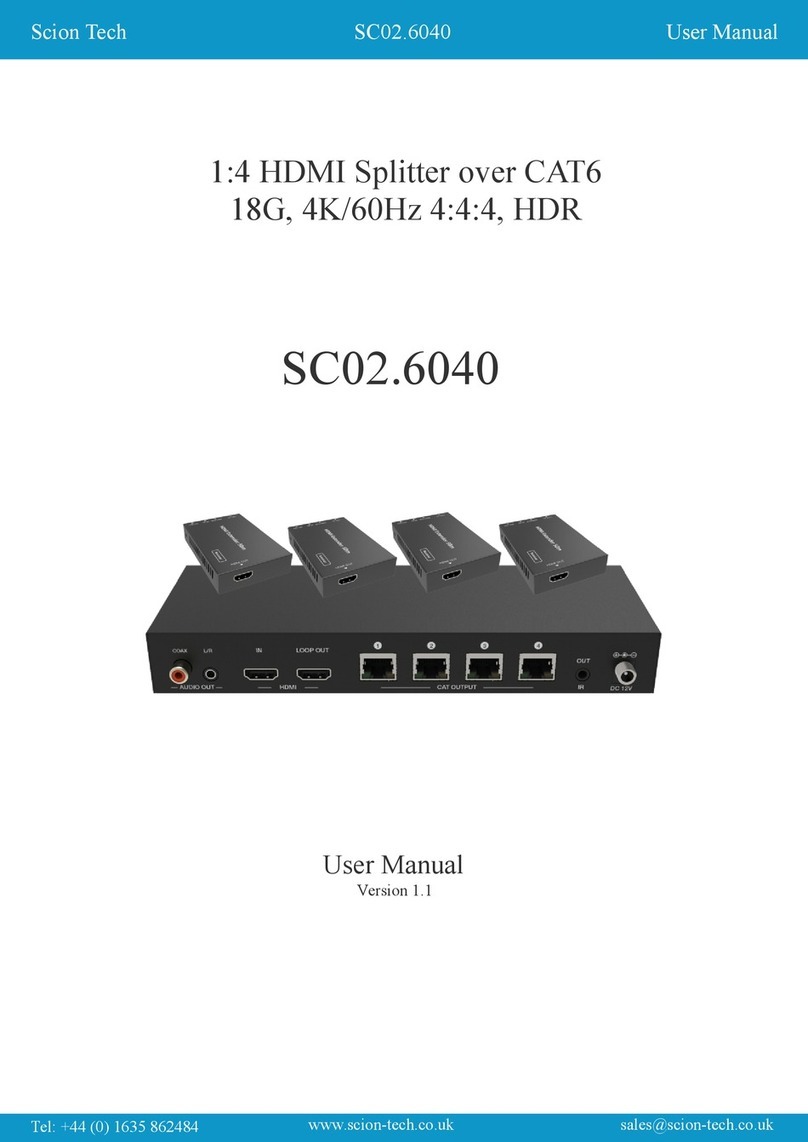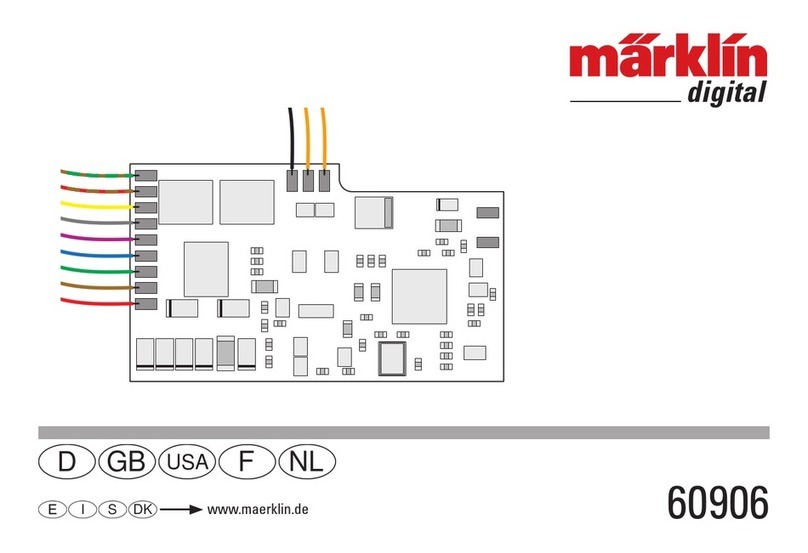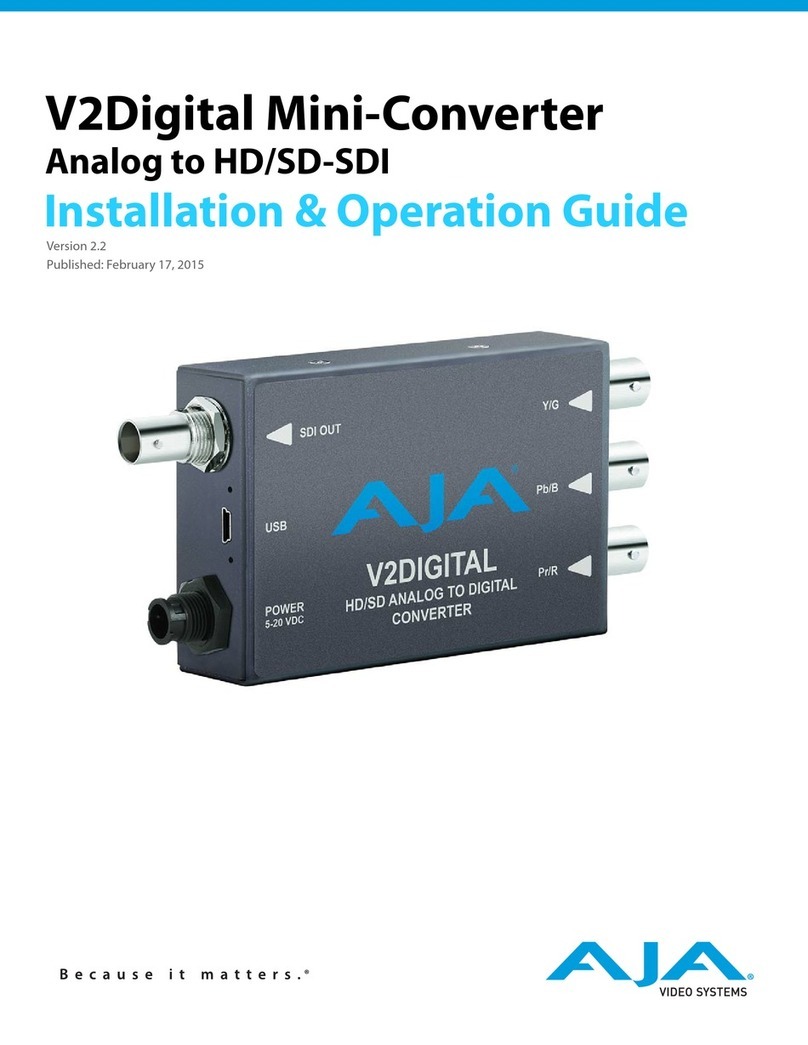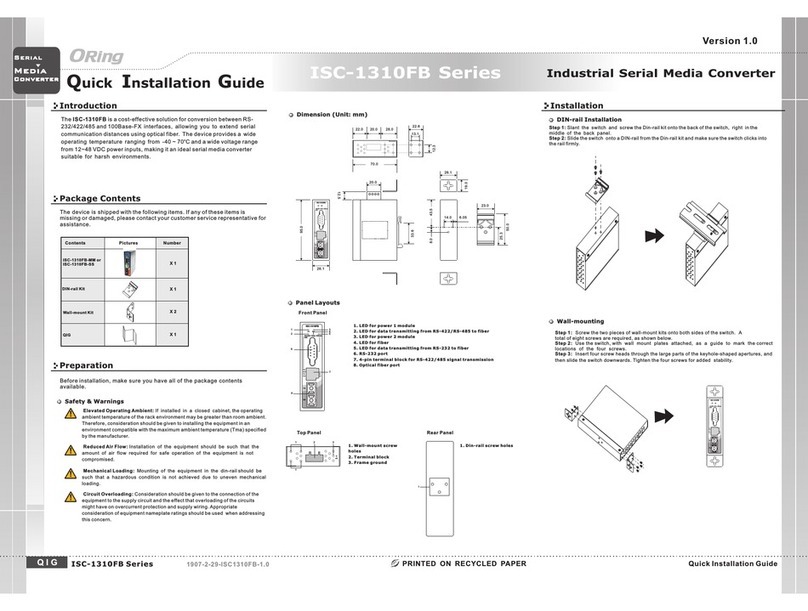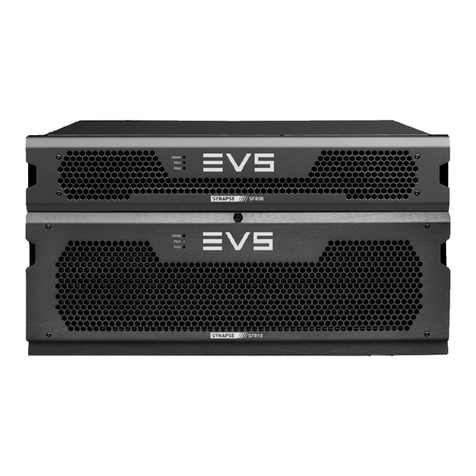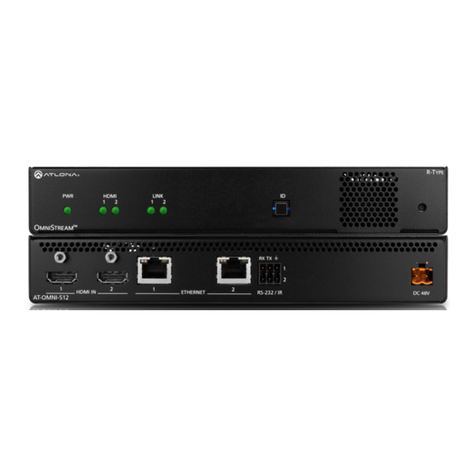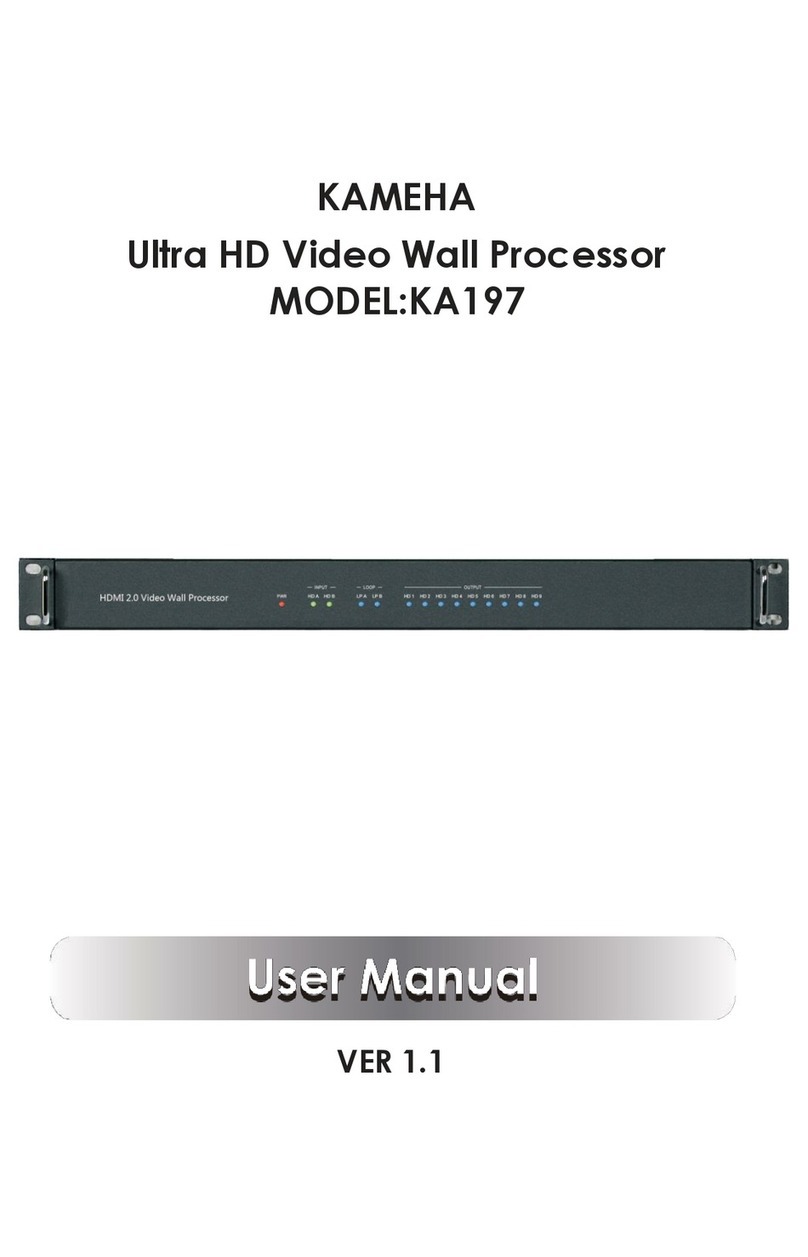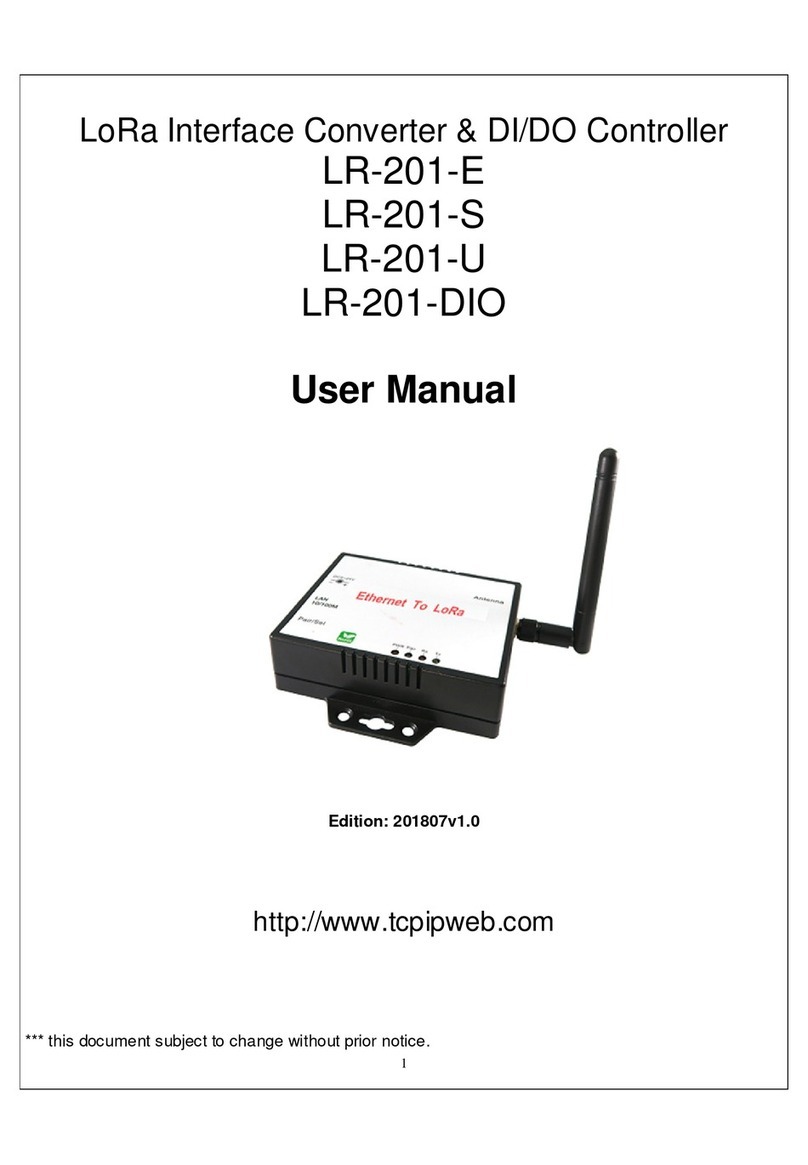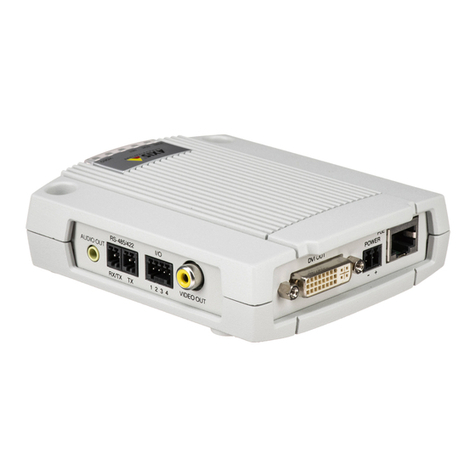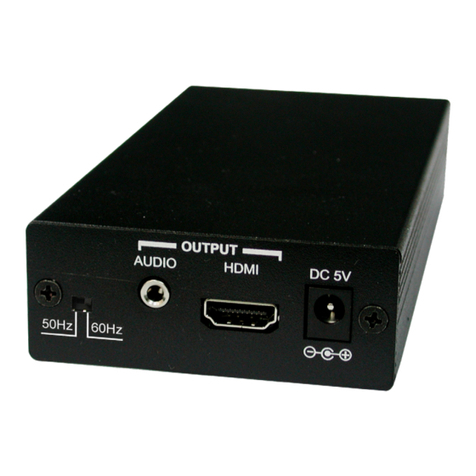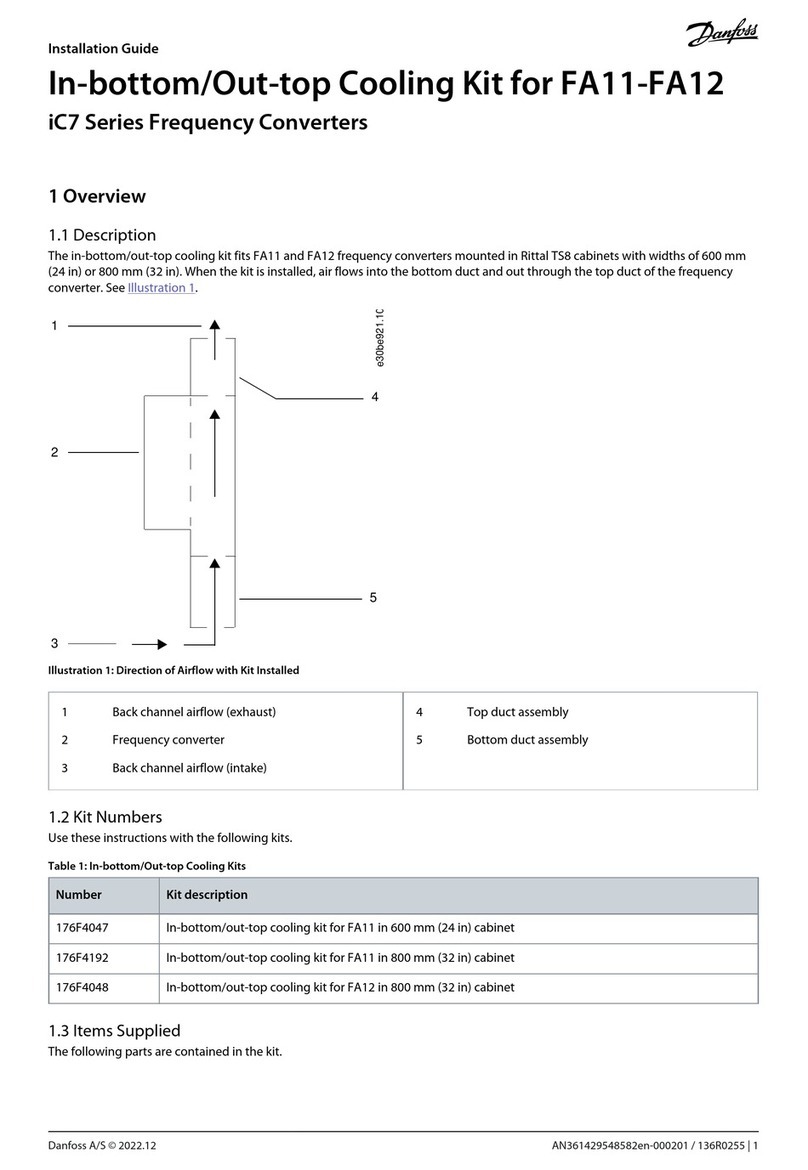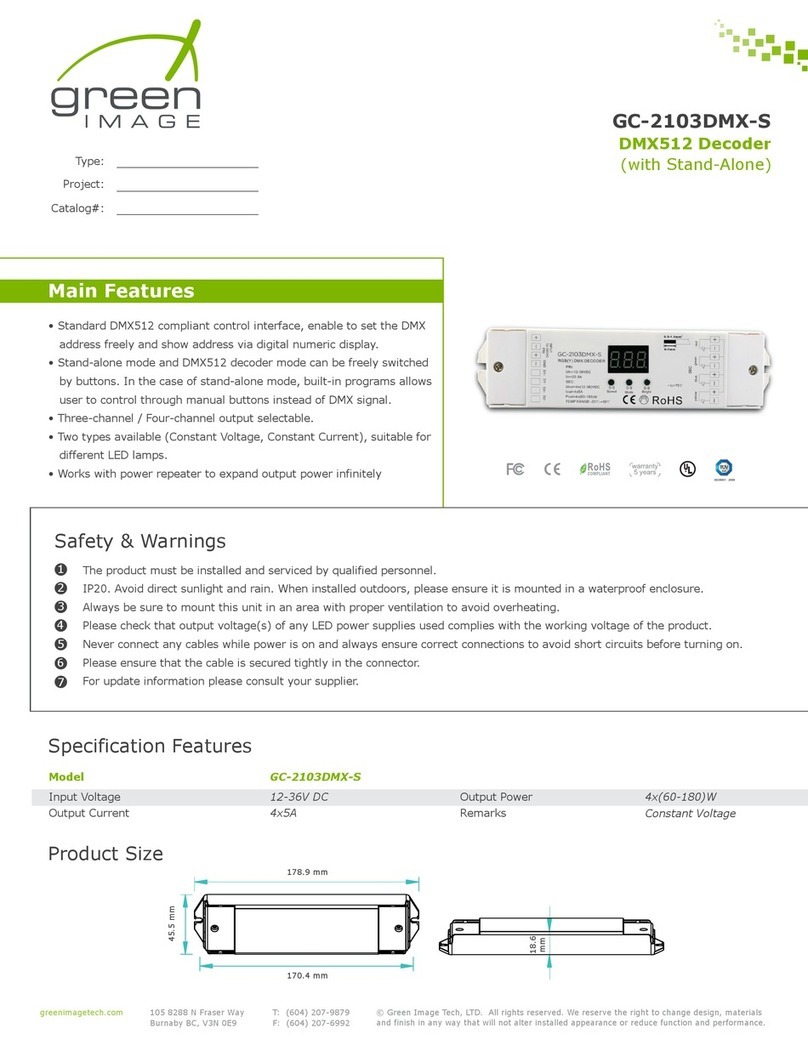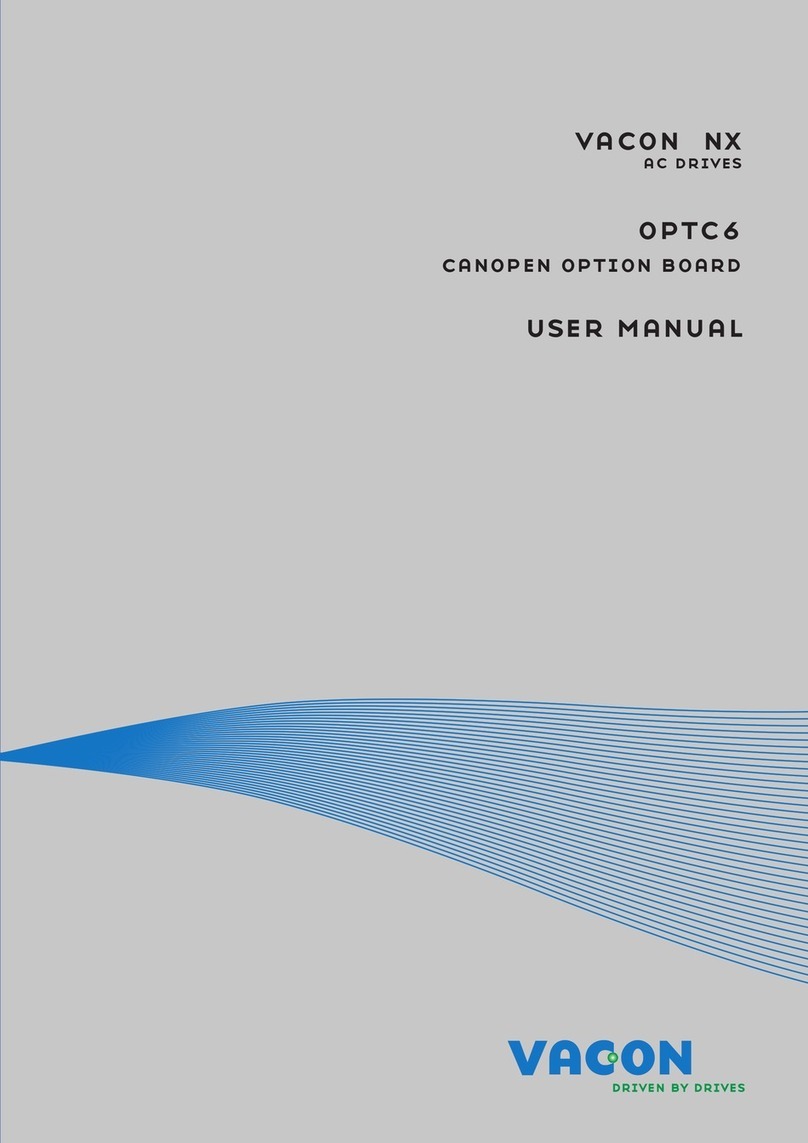Gotting HG G-7335xZA Series User manual

Interpreter for the Inductive Track Guidance of Vehicles
HG G-7335xZA
For the connection of 2 antennas
Interfaces: CANopen® HG G-73350ZA & Profibus HG G-73351ZA
Innovation through Guidance
English, Revision 04 Date: 24.04.2017 Dev. by: WM Author(s): RAD / MN
Device Description HG G-7335xZA
www.goetting-agv.com
Guide Wire

Device Description HG G-7335xZA | English, Revision 04 | Date: 24.04.2017 | www.goetting-agv.com
3Table of Contents HG G-7335xZA
Content
1 About this Document ............................................................................. 5
1.1 Function................................................................................................................................. 5
1.2 Symbols ................................................................................................................................. 5
2 Introduction............................................................................................. 7
2.1 Variant Overview................................................................................................................. 7
2.2 Components ......................................................................................................................... 7
3 Mounting ................................................................................................. 8
3.1 Casing..................................................................................................................................... 8
3.2 Connectors............................................................................................................................ 8
3.2.1 Antenna Sockets on the Interpreter .......................................................................................... 8
3.2.2 CAN Bus (HG G-73350).................................................................................................................. 9
3.2.3 Profibus (HG G-73351)................................................................................................................... 9
3.2.4 Power supply and serial interface ............................................................................................10
4 Commissioning ..................................................................................... 11
5 Hardware ............................................................................................... 12
5.1 Monitoring...........................................................................................................................12
5.2 Presettings ..........................................................................................................................12
5.3 Processing the signal.......................................................................................................12
5.4 The Control LEDs ..............................................................................................................13
5.4.1 CAN Bus (HG G-73350)................................................................................................................13
5.4.2 Profibus (HG G-73351).................................................................................................................13
6 Software ................................................................................................14
6.1 Connection to a PC via the Serial Interface .............................................................14
6.2 Terminal program .............................................................................................................14
6.3 Monitor Program...............................................................................................................15
6.3.1 Main menu .......................................................................................................................................15
6.3.2 Antenna menu ................................................................................................................................17
6.3.3 CAN menu (HG G-73350) ............................................................................................................18
6.3.4 Profibus-Menu (HG G-73351) ....................................................................................................19
6.4 Switching to different environment parameters ....................................................20
6.5 Updating the Firmware ...................................................................................................20
7 CAN Interface (HG G-73350) ............................................................... 22
7.1 Definition of the Terms CAN and CANopen® ..........................................................22
7.2 Description of the process data objects (PDOs) .....................................................24
7.2.1 Transmission objects....................................................................................................................24
7.2.1.1 PDO_1 ...........................................................................................................................................24
7.2.1.2 PDO_2 ...........................................................................................................................................26
7.2.2 Receiving objects...........................................................................................................................26

Device Description HG G-7335xZA | English, Revision 04 | Date: 24.04.2017 | www.goetting-agv.com
4Table of Contents HG G-7335xZA
7.3 Heartbeat ............................................................................................................................ 27
7.4 Writing on service data objects (SDOs) .................................................................... 27
7.5 Object directory ................................................................................................................ 27
7.5.1 Communication specific entries................................................................................................28
7.5.2 Manufacturer entries ....................................................................................................................29
7.5.3 Standard device profile ................................................................................................................30
7.5.4 CANopen Object Dictionary........................................................................................................30
7.5.4.1 Device Type..................................................................................................................................30
7.5.4.2 Error Register ..............................................................................................................................30
7.5.4.3 COB-ID SYNC message ............................................................................................................30
7.5.4.4 Device Name................................................................................................................................31
7.5.4.5 Hardware Version.......................................................................................................................31
7.5.4.6 Software Version ........................................................................................................................31
7.5.4.7 Save Parameter...........................................................................................................................31
7.5.4.8 Restore Default Parameter......................................................................................................31
7.5.4.9 Producer Heartbeat Time.........................................................................................................32
7.5.4.10 Identity Object.............................................................................................................................32
7.5.4.11 Receive PDO Parameter...........................................................................................................32
7.5.4.12 Mapping RPDO_1.......................................................................................................................32
7.5.4.13 Transmit PDO_1 Parameter....................................................................................................33
7.5.4.14 Transmit PDO_2 Parameter....................................................................................................33
7.5.4.15 Mapping TxPDO_1.....................................................................................................................33
7.5.4.16 Mapping TxPDO_2.....................................................................................................................34
7.5.4.17 Manufacture Parameter - parameters of the antenna....................................................34
7.5.4.18 Manufacture parameter - calibration of the antenna......................................................35
7.5.4.19 Manufacture parameter - node parameter.........................................................................36
7.5.4.20 8 Bit Digital Input (transmitted in TxPDO 1) ......................................................................36
7.5.4.21 16 Bit Analog Inputs (transmitted in TxPDO 1 und TxPDO 2)......................................37
8 Profibus Interface (HG G-73351) ........................................................ 38
9 Troubleshooting ................................................................................... 39
10 Technical Data ...................................................................................... 40
11 Appendix ............................................................................................... 41
A Block Diagrams...................................................................................................................................... 41
B Diagrams................................................................................................................................................... 42
C Electronic Data Sheet (ESD File, HG G-73350) ....................................................................... 45
D GSD File (HG G-73351)....................................................................................................................... 45
12 List of Figures....................................................................................... 46
13 List of Tables ........................................................................................ 47
14 Copyright and Terms of Liability ........................................................ 49
14.1 Copyright ............................................................................................................................ 49
14.2 Exclusion of Liability ....................................................................................................... 49
14.3 Trade Marks and Company Names............................................................................. 49

Device Description HG G-7335xZA | English, Revision 04 | Date: 24.04.2017 | www.goetting-agv.com
5Chapter 1: About this Document HG G-7335xZA
1About this Document
1.1 Function
This device description contains information regarding the correct mounting, electric instal-
lation, commissioning and maintenance of the interpreter HG G-7335xZA for the technical
personnel of a manufacturer who wants to integrate a guide wire track guidance system
into an automated guided vehicle (AGV).
This device description does not contain information regarding the usage of the superordi-
nate system, e.g. the automated guided vehicle (AGV). For this information consult the doc-
umentation of the vehicle manufacturer resp. the operator of a facility.
1.2 Symbols
The following symbols and formatting are used in Götting documentations:
Note
Indicates technical information that should be followed when using the device.
ATTENTION!
Indicates dangers that may lead to damages or the destruction of the device.
BEWARE!
Indicates dangers that may lead to injuries or severe damage of property.
WARNING!
Indicates dangers that may lead to injuries, potentially with loss of life, or severe damage of
property.
Tip
Indicates information that makes handling of the device easier.

Device Description HG G-7335xZA | English, Revision 04 | Date: 24.04.2017 | www.goetting-agv.com
6Chapter 1: About this Document HG G-7335xZA
Link
Indicates additional information in the internet, e.g. on our homepage www.goetting-
agv.com. Those links are clickable in the PDF version of this documentation.
Program texts and variables are indicated through the use of a fixed width
font.
Whenever the pressing of letter keys is required for program entries, the required
etter eys are indicated as such (for any programs of Götting KG small and capital
letters are equally valid).

Device Description HG G-7335xZA | English, Revision 04 | Date: 24.04.2017 | www.goetting-agv.com
7Chapter 2: Introduction HG G-7335xZA
2Introduction
The described interpreter allows to connect two tracking antennas to one device. The inter-
preter contains two identical channels with an independent setting of the filter frequency.
The data output is carried out either via CAN Bus or Profibus, this depends on the Variant
(see below). For CAN the CANopen® protocol is implemented (Device Profil DS 401).
The parameters inside the interpreter can either be set via a serial interface using a terminal
program (e.g. HyperTerm) or for the CAN version via the various SDOs of the CANopen®
protocol.
2.1 Variant Overview
The interpreter is available in two variants that differ in the interface:
This manual describes the hardware revision 73350ZA2 starting at software 73350A01.14
(HG G-73350ZA) resp. 73350YA2 with software 73351A01.00 (HG G-73351ZA).
2.2 Components
At the time this manual was printed, the interpreter can be combined with the following an-
tennas:
–HGG-19200
–HGG-19210
–HGG-19535
Technical informations in PDF format about these antennas can be found on our website at
Link
http://www.goetting-agv.com/components/inductive
Variant Interface
HG 73350ZA CAN-Bus / CANopen®
HG 73351ZA Profibus
Table 1 Variant Overview

Device Description HG G-7335xZA | English, Revision 04 | Date: 24.04.2017 | www.goetting-agv.com
8Chapter 3: Mounting HG G-7335xZA
3Mounting
3.1 Casing
Figure 1 Casing interpreter HG G-73350/HG G-73351
3.2 Connectors
All connectors are A-coded M12 panel plugs/jacks.
3.2.1 Antenna Sockets on the Interpreter
The steering antennas are connected via a 1:1 cable to the corresponding 4-pin A-coded
M12 panel jack. The two panel jacks are shown in Figure 1, labeled ANT1 and ANT2. They
are allocated as follows:
ANT1 / ANT2 (female) Pin Signal
1+24 V
2GND
3Usum
4Udiff
Table 2 Pin allocation antenna sockets, connectors ANT1 and ANT2
drillhole for mounting

Device Description HG G-7335xZA | English, Revision 04 | Date: 24.04.2017 | www.goetting-agv.com
9Chapter 3: Mounting HG G-7335xZA
These panel jacks provide connection to the antennas. It is irrelevant whether one or two
antennas are connected. When using only one antenna, ANT1 or ANT2 can be chosen. The
displaying of CD1/CD2 on the front panel (Siehe „Position of the LEDs“ auf Seite 13.) refers
to the corresponding antenna input. The input voltage of ANT1 and ANT2 are processed in-
ternally as US1/UD1 or US2/UD2.
3.2.2 CAN Bus (HG G-73350)
The CAN bus is connected to the device via two 5-pin A-coded M12 connectors male/fe-
male (Siehe „Casing interpreter HG G-73350/HG G-73351“ auf Seite 8.). There they can be
found as BUS1 and BUS2, which are allocated as follows:
The connectors of the inputs BUS1/BUS2 are connected in parallel, i.e. there is no input or
output. If the interpreter is installed at the end of the bus line, a CAN terminator has to be
installed. Those terminators can be ordered form different manufacturers and are available
for most plugs and jacks. The CAN connectors can also be used as power supply.
ATTENTION!
Do not connect +24V to pin 4 or 5!
3.2.3 Profibus (HG G-73351)
Two 5-pin B-coded M12 male/female, indicated as BUS1 and BUS2 in Figure 1 above. There
they can be found as BUS1 and BUS2, which are allocated as follows:
The connectors of the inputs BUS1/BUS2 are connected in parallel, i.e. there is no input or
output. If the interpreter is installed at the end of the bus line, a bus terminator shall be pro-
vided. Those terminators can be ordered from different manufacturers and are available for
most plugs and jacks.
BUS1 (male) BUS2 (female) Pin Signal
1Nc
2 +24 V
3GND
4CAN_H
5CAN_L
A-coded
Table 3 Pin allocation CAN bus, connectors BUS1 and BUS2
BUS1 (male) BUS2 (female) Pin Signal
1Bus +5 V
2Bus A
3RTS
4Bus B
5Bus GND
B-coded
Table 4 Pin allocation Profibus, connectors BUS1 and BUS2

Device Description HG G-7335xZA | English, Revision 04 | Date: 24.04.2017 | www.goetting-agv.com
10 Chapter 3: Mounting HG G-7335xZA
3.2.4 Power supply and serial interface
Here a 5-pin A-coded M12 panel plug is used, in Figure 1 referred to as PWR RS232.
This connection serves as the power supply. Additionally the serial interface RS 232 can be
used for configuration, see chapter 6 on page 14.
PWR / RS232 (male) Pin Signal Annotation
1+24 V
2 — n.c.
3TxD Serial RS 232 data output
4RxD Serial RS 232 data input
5GND
Table 5 Pin allocation of power supply and serial interface, connector PWR / RS232

Device Description HG G-7335xZA | English, Revision 04 | Date: 24.04.2017 | www.goetting-agv.com
11Chapter 4: Commissioning HG G-7335xZA
4Commissioning
After mounting or changing the antennas, a position calibration is recommended. Please
see chapter 6.3.2 on page 17 and 7.5.4.18 on page 35. The position calibration has to be
carried out for each antenna individually.
Note
Only by processing this position calibration the interpreter is able to calculate and display
the deviation scaled to mm.
For a position calibration the following things are required:
positioning of the antenna at nominal height. The nominal height must correspond to
the one set in the interpreter (see section 6.3.2 on page 17)
a guide wire with a rated current (if possible 10 kHz)
The calibration can be started by using the serial interface. During this procedure the anten-
na has to be moved from left to right in a certain area, being two times mounting height
above the wire (see 7.5.4.18 on page 35 resp. Figure 7 on page 18).

Device Description HG G-7335xZA | English, Revision 04 | Date: 24.04.2017 | www.goetting-agv.com
12 Chapter 5: Hardware HG G-7335xZA
5Hardware
The casing of the interpreter is made of plastic. All wires etc. can be connected via M12 con-
nectors on the front panel. The input signals (two per antenna) are amplified, filtered with
an adjustable band filter (frequency input, see Figure 14 on page 42) and rectified synchro-
nously. Afterwards the direct current is smoothened by a low-pass filter (see block diagram,
Figure 12 on page 41)
5.1 Monitoring
The function of the antennas is controlled: the horizontal component of the field (sum an-
tenna) is usually controlled by the threshold bits in the system status as a reference.
The vertical component of the field (difference antenna) equals 0 above the middle of the
wire, but a defective difference channel would always cause a deviation of 0. That is why
both channels are controlled by a DC monitoring. In front of the receiving inductors, 5V are
fed into the circuit, which are passed on from amplifier to amplifier until reaching the inter-
preter. If this voltage is applied, the status bits DC1-OK respectively DC2-OK are set.
5.2 Presettings
To run the interpreter under different conditions without having to change the circuit board,
the input signals have been scaled: An input amplitude of 1 Vpp reaches a full range of 75 %
between sum channel and the difference channel. The Node-ID is preset to 1. The maximal
incoming signal of all data streams having other frequencies is 5 Vpp.
As the parameters of the device (reading height, wire current) can be altered, it is no prob-
lem that the antennas are having different dimensions or being adjusted differently.
The interpreter is preset to a frequency of 10 kHz. The threshold for the calculation of the
distances referring itself to 1000 units is preset on input voltage S1 respectively S2. If the
sum voltage lies above this value, the corresponding bit is set in the system status and the
corresponding LED CDx lights up. These presettings can be modified using a serial terminal
(for example HyperTerm on a PC) or via the various SDOs of the CANopen® protocol (s. Ta-
ble 25 on page 29).
The two channels of the interpreter have the same presettings.
5.3 Processing the signal
The four voltages of the four channels are checked every 500 μs and are summed up during
a period of 8 ms. Each 10 ms the CANopen® resp. Profibus protocol are provided with the
measured values. The scaled distances are put out in mms. To calculate those distances the
quotients are formed (current compensated).

Device Description HG G-7335xZA | English, Revision 04 | Date: 24.04.2017 | www.goetting-agv.com
13Chapter 5: Hardware HG G-7335xZA
The 16x oversampling and the use of a 10bit A/D converter lead to a value range of the sum
voltage of 16384, of the difference voltage of ±8192.
As in this range the DC offsets of the channels have to be compensated, a range of about
16000 resp. ±8000 units is usable. Further information may be found in chapter 7 on page
22 (CAN Bus) resp. chapter 8 on page 38 (Profibus).
5.4 The Control LEDs
On the front panel a group of 5 LEDs can be found.
Figure 2 Position of the LEDs
– PWR: Green, presents the power voltage of the device
– CD1, CD2: Yellow, show the exceeding of the sum voltage and the set thresholds for
channel 1 and 2.
The green LED (BUS) and the red LED (ERR) behave differently depending on the interface,
CANopen® or Profibus.
5.4.1 CAN Bus (HG G-73350)
– The green LED (BUS) flashes after turning on the device. It shows the status of the
device:
–Node stop: LED flashes slowly
–Node reset communication and node preoperational: LED flashes fast
–Node operational: LED is lit continously
– The red LED (ERR) starts to flash as soon as a CAN bus error occurs. Additionally the
red flashing LED displays an error in the set of parameters.
5.4.2 Profibus (HG G-73351)
– BUS: Green, is lit while data is exchanged with the Profibus master.
– ERR: Red, is activated if one of the following error conditions occurs:
– EEPROM parameter checksum is not correct.
– Profibus protocol chip hardware error.
– Profibus buffer error, if modules other than those specified in the GSD file are
displayed.
– CD1/CD2 lights up if there is a sum level, but a wire break on the differential channel
has been detected.

Device Description HG G-7335xZA | English, Revision 04 | Date: 24.04.2017 | www.goetting-agv.com
14 Chapter 6: Software HG G-7335xZA
6Software
6.1 Connection to a PC via the Serial Interface
The interpreter has a serial interface included in the 5 pin PWR RS232. This interface can
be used for its diagnosis, configuration or a software update. A PC with a serial RS 232 in-
terface is needed. For PCs that don‘t have a serial interface a USB to RS 232 adapter can
be ordered from electronics retailers.
Figure 3 Connection example: Connection to the serial interface of a PC
The interpreter‘s serial interface has the following communication settings. Those have to
be configured in the terminal program on the PS (see below).
6.2 Terminal program
Every terminal program compatible with the transmission parameters shown above can be
used, examples are HyperTerminal® or Tera Term®. HyperTerminal has been included in
earlier versions of Microsoft® Windows®. Additionally it can be downloaded from the fol-
lowing address:
Link
https://www.hilgraeve.com/hyperterminal/
Setting
Bits per second 38,400
Data bits 8
Parity Even
Stop bits 1
Terminal emulation ANSI
Table 6 Transmission parameters of the serial RS 232 interface
USB-Serial
Adapter (optional)
Serial
Interface
All others:
Do not connect
PWR RS232
Interpreter
Computer (e.g. PC
or Laptop)
11RxD
TxD
GND
RxD
TxD
GND
2
3
4
5
1
2
3
4
5
1
23
4
5
6
7
8
9
6
2
7
3
8
4
9
5
+
–
External power supply
+24 V

Device Description HG G-7335xZA | English, Revision 04 | Date: 24.04.2017 | www.goetting-agv.com
15Chapter 6: Software HG G-7335xZA
6.3 Monitor Program
Connect the PC to the interpreter and start the Terminal program.The monitor will start after
pressing ‘m‘ or .
6.3.1 Main menu
Depending to the variant the following menu appears:
Figure 4 Screenshot: Main menu of the monitor program (HG G-73350 with CAN Bus)
Figure 5 Screenshot: Main menu of the monitor program (HG G-73351 with Profibus)
The first two lines represent the input.
S1, S2, D1, D2
The values for S1, D1, S2, and D2 are each the sum of the 16 samplings. The range for the
sum voltage is 0 to 16383 and for the difference voltage -8192 to +8191.
X1, X2
X1 and X2 present the calculated values for the collateral deviation of the antennas above
the guide wire in a range from -255 to +255 in mm. The value of the threshold will be -256
if the corresponding voltages of S1 respectively S2 fall below the set threshold.
S1: 1 D1: -10 S2: 10816 D2: -4403 X1:-256 mm X2: -50 mm Status: 0x40
(1) Select Antenna System 1
(2) Select Antenna System 2
(C)AN Menue
(L)oad Values to EEProm
(O)utput CSV-Data (press 'a' to abort)
(U)pdate Firmware
(S)ervicemenue
(Q)uit
Software Version 73350A01.05 / 15.MAR.2005 Serial Number: 9999999
S1: 6418 D1: 65 S2: 0 D2: -16 X1: +0 X2: -256 Status: 0x80
(1) Select Antenna System 1
(2) Select Antenna System 2
(P)rofibus Menu
(L)oad Values to EEProm
(O)utput CSV-Data (press 'a' to abort)
(U)pdate Firmware
(S)ervicemenue
(Q)uit
Software Version 73351A01.00 / 03.SEP.2008 Serial Number: 7385277

Device Description HG G-7335xZA | English, Revision 04 | Date: 24.04.2017 | www.goetting-agv.com
16 Chapter 6: Software HG G-7335xZA
Status
The hexadecimal output of binary coded system statuses in the same format as output via
the serial telegram, PDO_1 (CAN) or Profibus.
Example: If 0xCC is put out, the thresholds in both channels have been exceeded and both differ-
ence channels are operational.
Selecting a menu
–withrespectively the menus for the two antenna systems can be chosen, see
6.3.2 on page 17
– opens the CAN menu, see 6.3.3 on page 18
– opens the Profibus menu, see 6.3.4 on page 19
– changed parameters can be saved in the EEProm by pressing . To confirm those
changes the password 815 has to be entered immediately after.
– to protocol data, the output in CSV (Comma Separated Values) mode can be acti-
vated by pressing . Then the values of the status line will be displayed separated by
comma and terminated by CrLF:
Example:
44,0,-15,9627,-3335,-256,50
44,0,-17,9626,-3333,-256,51
In this example the first number “44“ presents the current status of the device (here:
threshold 2 exceeded), then Us1= 0 and Ud1= 17, followed by Us2= 9626 and Ud2= -
3333. The last displayed numbers show the collateral deviations for antenna 1 and
antenna 2. If no wire was detected, -256 is displayed as distance value.
By using the protocol function of Hyperterm the data can be logged. stops the
output.
–withthe firmware can be updated, see 6.5 on page 20
–theervicemenu cannot be modified by the user
Hex value Meaning
0x80 S1 has exceeded the set threshold for channel 1
0x40 S2 has exceeded the set threshold for channel 2
0x20 not connected
0x10 calibration in progress
0x08 DC1_OK (difference channel 1 connected galvanically with interpreter)
0x04 DC2_OK (difference channel 2 connected galvanically with interpreter)
0x02 not connected
0x01 check sum of the two parameters is wrong
Table 7 Meaning of the possible values in the status output

Device Description HG G-7335xZA | English, Revision 04 | Date: 24.04.2017 | www.goetting-agv.com
17Chapter 6: Software HG G-7335xZA
6.3.2 Antenna menu
In this chapter the sub menu for antenna 1 will be explained. The sub menu for antenna 2
is identical.
Figure 6 Screenshot: Antenna menu
– By pressing the frequency in the range of 1 to 28 kHz can be modified. Please
note that the antenna HG 19210-C works in a range from 3 to 25 kHz!
– helps adjusting the threshold which refers to the sum voltage. When this thresh-
old is exceeded, the front LED CDx and the corresponding bits in the system status
are set.
–Byusingthe distance between the guide wire and the bottom of the sensor can
be modified.
–Withthe internal height, which is specified for each type of antenna, can be
entered.
Note
The sum of the values entered under and are used to calculate the distance
–starts the calibration of the distance output. Now the corresponding antenna has
to be moved in an area of ±2x height over the guide wire. For the calibration a 10 kHz
wire frequency is recommended as the frequency compensation is also referred to
this frequency.
–Withthe menu can be left.
S1: 1 D1: -10 S2: 10816 D2: -4403 X1:-256 mm X2: -50 mm Status: 0x40
(F)req 1 select [/Hz]: 10000
(D)etect Level 1 [/Smpl]: 1000
(H)eight of Antenna mounting [/mm]: 60
(I)nternal height [/mm]: 35
(C)alibrate
(Q)uit

Device Description HG G-7335xZA | English, Revision 04 | Date: 24.04.2017 | www.goetting-agv.com
18 Chapter 6: Software HG G-7335xZA
Calibration menu
The calibration menu (here: antenna 1) is made up as follows:
Figure 7 Screenshot: Calibration menu antenna 1
During the calibration the maximum of the voltage S1 is saved in Us1. In Udl1 and Udr1
the maximum of the voltage D1 on the left and right side from the wire is saved. During this
procedure the sensor has to be moved e.g. ±120 mm above the wire if the reading height is
60 mm. This equals a value of reading height multiplied with two.
After pressing any key the calibration values are calculated using the maxima and the read-
ing height, which was entered in the antenna menu. To save these values permanently
has to be pressed in the main menu.
6.3.3 CAN menu (HG G-73350)
You can find general information about the CAN Bus and the corresponding terms in chap-
ter 7 on page 22. The CAN menu is made up as follows:
Figure 8 Screenshot: CAN menu (HG G-73350)
S1: 3780 D1: 3617 S2: 3133 D2: 4590 X1: +62 X2: +99 Status: 0xc0
Us1: 3795 Udl1: 0 Udr1: 3645
shift Antenna 1 from -2*H to +2*H and press any key when ready
S1: 0 D1: -6 S2: 0 D2: -40 X1: -256 X2: -256 Status: 0x00
Bus online Operational Last Err: 0000
(N)ode ID [1..127]: 1
CAN-(B)audrate[20,50,125,250,500,800,1000 kB]: 500
(C) TPDO_1 mode [1..240,255]: 255
(D) TPDO_1 inhibit time [0,10..10000 ms]: 0
(E) TPDO_1 event time [0,10..10000 ms]: 10
(F) TPDO_2 mode [1..240,255]: 255
(G) TPDO_2 inhibit time [0,10..10000 ms]: 0
(H) TPDO_2 event time [0,10..10000 ms]: 10
(I) Heartbeat time [0..65535 ms]: 0
(A)utostart 1
(L)owbyte first 0
(Q)uit

Device Description HG G-7335xZA | English, Revision 04 | Date: 24.04.2017 | www.goetting-agv.com
19Chapter 6: Software HG G-7335xZA
In addition to the above described staus line, the status of the CAN bus is displayed: Bus
online changes to Bus offline if e.g. the CAN bus is unplugged or because of lacking
a terminator. Besides that the CAN open Node statuses stopped, preoperational or
operational are displayed. The following keys have a specific function:
–withthe node address in a range from 1 to 127 can be chosen.
– by pressing one of the listed baudrates can be chosen, the function autobaud is
not implemented.
–byusingkeythe PDO_1 operational mode can be selected. Choosing a value
between 1 and 240 the synchronous, cyclical mode can be picked. By selecting 255
the asynchronous mode is set. The two following modes are only available in the
asynchronous mode:
–is the inhibit time of PDO_1. In PDO_1 the system status and the calcu-
lated distances are transmitted. The inhibt time is the shortest time period
between two periods that can be achieved.
–is the time of the cycle of the PDO_1 transmission. If both values are 0,
PDO_1 will no be transmitted.
– by pressing the operational mode PDO_2 is selected. Choosing a value between
1 and 240 the synchronous, cyclical mode can be chosen. By selecting 255 the asyn-
chronous mode is set. The two following modes are only available in the asynchro-
nous mode:
–is the inhibit time of PDO_2. In PDO_2 the four analog antenna voltages are
transmitted. The inhibt time is the shortest time period between two periods
that can be achieved.
–is the time of the cycle of the PDO_2 transmission. If both values are 0,
PDO_2 will no be transmitted.
–changes the so called Heartbeat time. At the chosen interval of this cycle time
a control message is sent. If the time equals 0 no message is sent.
–withthe autorun function is (de)activated.
– if autorun is deactivated only the Heartbeat message (if activated) is sent
after turning on the device. The mode of the device is preoperational.
– if autorun is activated the Heartbeat message (if activated) and the PDOs are
sent immediately after turning on the device. The mode of the device is ope-
rational.
– by pressing the order of the bytes within the PDOs is changed: by choosing Low-
byte first = 1 the low order byte of a 16bit word is transmitted first.
6.3.4 Profibus-Menu (HG G-73351)
The specification of the Profibus telegrams is shown in chapter 8 on page 38. The Profibus
menu is made up as follows:

Device Description HG G-7335xZA | English, Revision 04 | Date: 24.04.2017 | www.goetting-agv.com
20 Chapter 6: Software HG G-7335xZA
Figure 9 Screenshot: Profibus-Menu (HG G-73351)
In this menu the following keys have a specific function:
–for choosing the node address in a range of 0 to 126
–for inverting the order of the bytes of the variables X1, X2 and F2 within the mas-
ter- input and output data fields. Setting (L)owbyte first = 1the low byte of a 16
Bit word ist transmitted first.
– Press uit to return to the main menu.
If pre-defined, the content of the master input or the output bytes will be displayed in this
menu. The status of the profibus is output as well.
6.4 Switching to different environment parameters
The interpreter can also be used in combination with tracking systems which have another
guide wire current or another reading height. Minor changes in the surrounding of the de-
vice (e.g. guide wire current between 35mA and 100mA at the same reading height) are
compensated by the dynamic range of the device.
The different guide wire currents, distances between the conductors and reading heights
are adapted to the antennas by changing the amplification factor. To change these factors
the monitor program has to be started, the displayed voltages Sx and Dx have to get no-
ticed.
The maximum of the sum voltage can be found above the conductor. By using the corre-
sponding potentiometer for the antenna, it has to be trimmed to approx. 12000 units. The
maximum of the difference voltage can be found at a corresponding distance collateral
from the conductor. By using the corresponding potentiometer for the antenna it has to be
trimmed to 6000 units.
6.5 Updating the Firmware
The processor inside the interpreter can be programmed via a Flashloader using the serial
interface. Therefor a serial connection to a PC has to be established.
1. Establish a connection with HyperTerm.
S1: 6453 D1: 65 S2: 0 D2: -13 X1: +0 X2: -256 Status: 0x80
Byte # Master-Input Profibus-Status: NO_ERROR
0 80
1 00
2 00 (N)ode ID [0..126]: 2
3 00 (L)owbyte first 0
4 ff
(Q)uit
Byte # Master-Output
0 00
1 00
2 00
3 00
Other manuals for HG G-7335xZA Series
1
This manual suits for next models
2
Table of contents
Other Gotting Media Converter manuals

